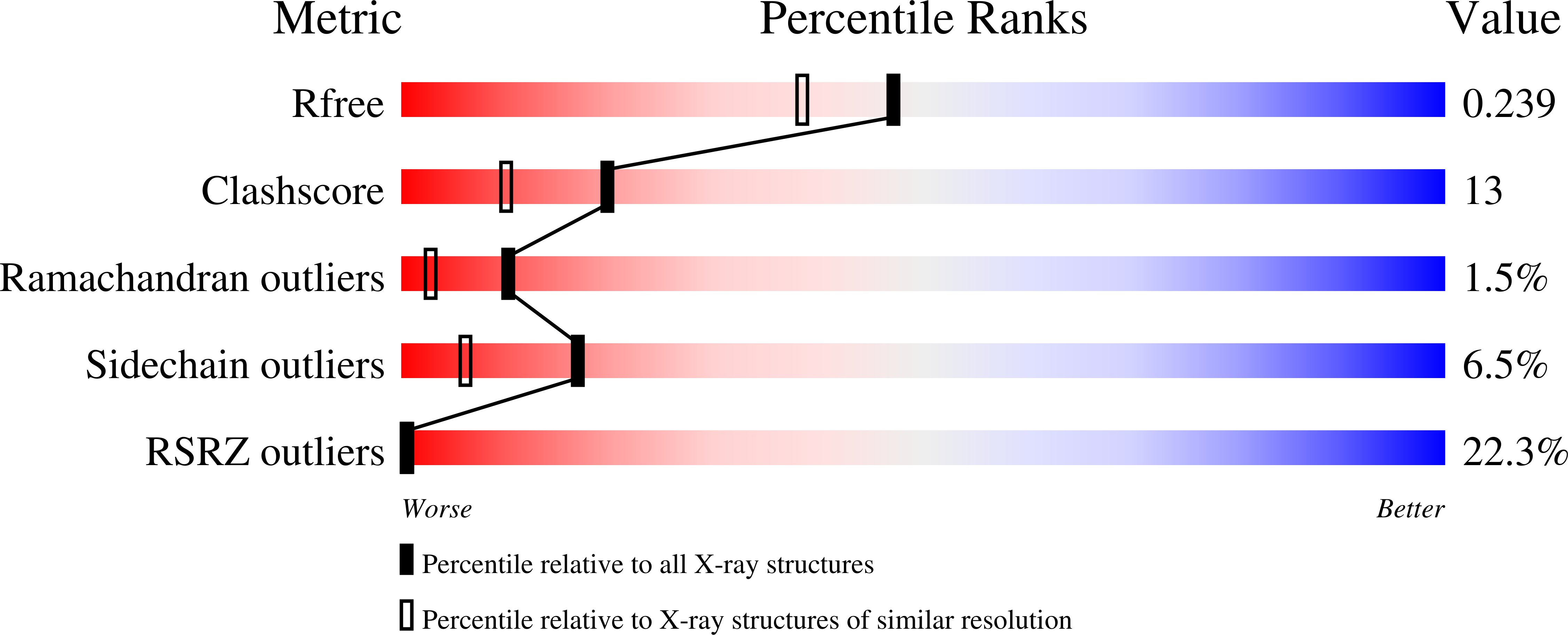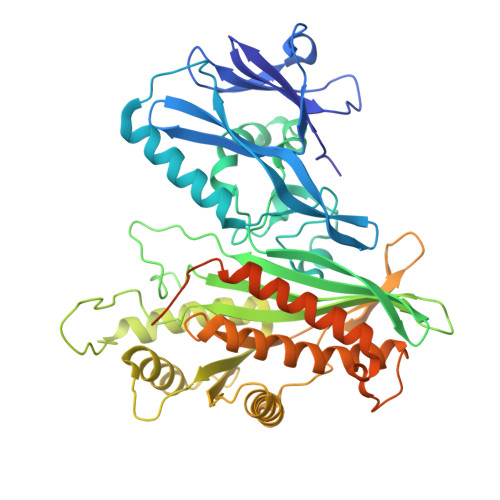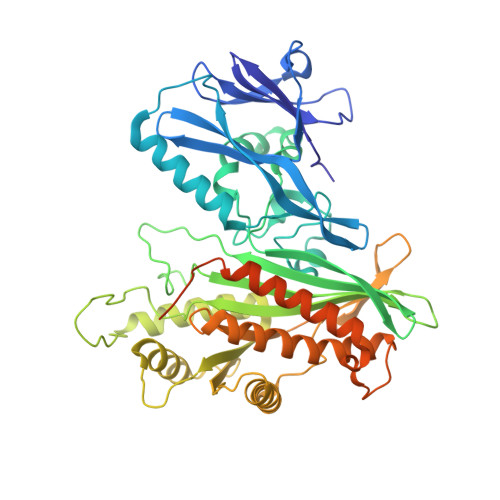Crystal structure of the yeast Sac1: implications for its phosphoinositide phosphatase function.
Manford, A., Xia, T., Saxena, A.K., Stefan, C., Hu, F., Emr, S.D., Mao, Y.(2010) EMBO J 29: 1489-1498
- PubMed: 20389282
- DOI: https://doi.org/10.1038/emboj.2010.57
- Primary Citation of Related Structures:
3LWT - PubMed Abstract:
Sac family phosphoinositide (PI) phosphatases are an essential family of CX(5)R(T/S)-based enzymes, involved in numerous aspects of cellular function such as PI homeostasis, cellular signalling, and membrane trafficking. Genetic deletions of several Sac family members result in lethality in animal models and mutations of the Sac3 gene have been found in human hereditary diseases. In this study, we report the crystal structure of a founding member of this family, the Sac phosphatase domain of yeast Sac1. The 2.0 A resolution structure shows that the Sac domain comprises of two closely packed sub-domains, a novel N-terminal sub-domain and the PI phosphatase catalytic sub-domain. The structure further shows a striking conformation of the catalytic P-loop and a large positively charged groove at the catalytic site. These findings suggest an unusual mechanism for its dephosphorylation function. Homology structural modeling of human Fig4/Sac3 allows the mapping of several disease-related mutations and provides a framework for the understanding of the molecular mechanisms of human diseases.
Organizational Affiliation:
Department of Molecular Biology and Genetics, Cornell University, Ithaca, NY, USA.

















